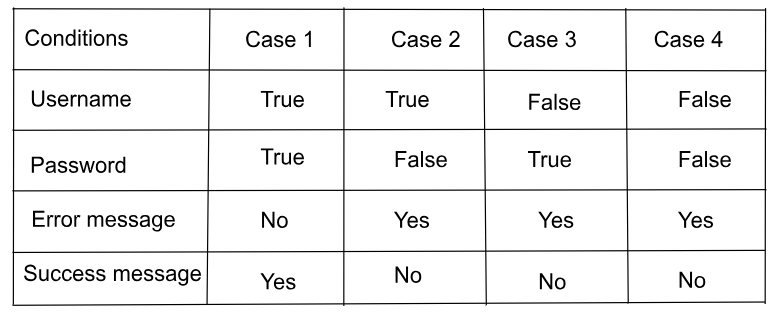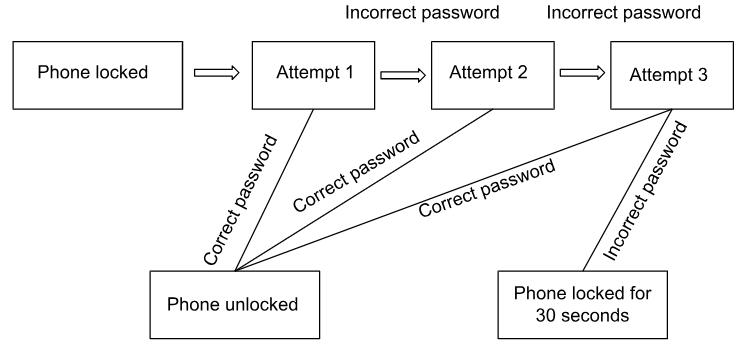In the development process of the software application, the software testing phase plays a vital role in evaluating the quality standards of the software application against the specified requirements. Testing results whether the actual output is expected or not. Also, it helps to determine the quality percentage of the software. In actuality, software testing can be carried out in two ways:
In manual testing, the testing of the application is accomplished via human efforts and without using any automation tool. We have different methodologies/types to carry out manual testing. For example – Smoke Testing, Sanity Testing, Regression Testing etc.
On the other hand, automation testing is achieved using different automation tools and frameworks. For example – HP ALM, Selenium Webdriver, QTP etc. As in manual testing, we implement test cases, in the same way in automation testing we implement test scripts using different suitable languages like Java, JavaScript, Python, Ruby etc.
Related read: Step By Step Software Testing Process To Achieve Top Product Quality
In this blog, we are certainly going to explore more about black box testing and its techniques. Let’s first understand the concept of black box testing.
Black box testing is one of the manual testing types. The main motive of black box testing is to confirm whether the functionality of the software is working as per the business requirement before delivering it to the end user. In black box testing, the tester is not aware of the internal code structure of the software. To perform black box testing, there is no need to have any prior programming knowledge. It is also known as “Closed box” testing.
Types of black box testing:
In functional testing, the tester follows a structured approach to verify the actual functionality of the application against the requirements.
Below listed are a few types of functional testing:
✅ Smoke testing
✅ Sanity testing
✅Regression testing
✅ Unit testing
✅ Integration testing
✅ System testing
✅ Acceptance testing
In non-functional testing, the software’s behaviour and stability are tested in different conditions. It does not involve functional testing.
Below listed are a few types of non-functional testing:
Let’s start with the black box testing techniques and their uses in testing. There are several techniques used in black box testing. The advantages of using these techniques are to lessen the number of test cases using correct test input and also to cover each and every edge case scenario. Black box testing techniques are mostly used in all testing types or levels. Below given are the techniques of black box testing:
The word partition itself explains the meaning. For any given set of input ranges, equivalent partitions are created to reduce the test input data. With the selection of random input from the given partition, it can evaluate the result for the entire partition. If a defect is found for a selected partition input, then it is highly possible to have a similar defect for the same partition.
For example – An input range is given as 30 to 40
Here, partitions are created for the given set of input ranges. Instead of testing the whole range value one by one, we can distribute the set of ranges into partitions and can test any random input from the partition and verify the test result.

The only difference we can see here is that in ECP, any random input is tested from the partition. But, in BVA mostly the boundary values are tested, as there are higher chances of having defects at boundary regions. There might be a question, what does a boundary value mean? Boundary values are the less than and greater than values for the given input.
In BVA, partitions are made similar to ECP. Let’s learn BVA with an example.
Assume we have a range from 12 to 16 to check the normal haemoglobin range.
For the above example, the boundary values are 11, 12, 13, 15, 16 and 17.

It is also called the “experience-based testing” technique. An experienced tester uses this technique based on his/her past experience to guess the defect-prone areas in the software product. In this technique, there are no specific instructions that are followed to validate the software. Based on the experience of the tester, most critical test cases are written to cover maximum test coverage. The main purpose of this technique is to cover all the generic edge cases of a software product.
Example – If we have a textbox to enter a name, then validate whether it is accepting digits, space, empty values or special characters.
This technique is used to test the product based on a variety of input combinations. The decision table is represented in tabular format, where we have the product input combinations versus the output in the table. Maximum test coverage can be achieved using this technique, as each and every scenario is captured in the table. Verifying the decision table helps the tester identify the missed use case. Also, the tabular format helps to understand the requirements and test cases easily. It is also called the “Cause-Effect Table”, as causes and effects are placed in tabular format.
Let’s learn decision table testing with an example to have a better understanding.
Example – Decision table for login window covering multiple scenarios (conditions).

Looking at the above table, we can say all the possible test scenarios are covered for the login page.
State transition testing is defined as “Testing the system behaviour with positive and negative input values”. Let’s discuss more in depth regarding state transition testing technique.
The word state here determines the current phase of the system, and the transition is defined as the process of changing the state of the system. This technique is used to test the system states and its transition based on a variety of input conditions passed. We can use this technique to test complex systems. The systems that carry multiple states based on the input provided can be tested using the “State transition testing technique”. Test cases can be easily defined with the help of a state transition diagram.

Here is an example of a state transition testing technique for unlocking mobile phones.
To unlock your mobile phone using a password, we are provided with a specific number of attempts. For example, let’s say we have 3 attempts to unlock the phone.
The current state of the phone is locked. When we try to unlock, a transition takes place and with the correct password the phone gets unlocked and the home screen is visible, which is another state. When an incorrect password is provided for the first time, it will throw an error message. And, when we cross the limit of the attempts, the phone gets locked for 30 seconds. This is another state.

With the help of the above diagram, it will be easier to understand the example.

In conclusion, it is evident that black box testing techniques offer a robust approach to conducting comprehensive end-to-end testing. These techniques not only enable thorough examination of software functionality but also bring efficiency to the testing process by minimizing the volume of test inputs required while maximizing the extent of test coverage. This methodology finds particular relevance in software applications that necessitate testing across a broad spectrum of inputs or conditions, especially those defined within a specific range.
Leave your competitors behind! Become an EPIC integration pro, and boost your team's efficiency.
Register Here

The Mindbowser team's professionalism consistently impressed me. Their commitment to quality shone through in every aspect of the project. They truly went the extra mile, ensuring they understood our needs perfectly and were always willing to invest the time to...

CTO, New Day Therapeutics

I collaborated with Mindbowser for several years on a complex SaaS platform project. They took over a partially completed project and successfully transformed it into a fully functional and robust platform. Throughout the entire process, the quality of their work...

President, E.B. Carlson

Mindbowser and team are professional, talented and very responsive. They got us through a challenging situation with our IOT product successfully. They will be our go to dev team going forward.

Founder, Cascada

Amazing team to work with. Very responsive and very skilled in both front and backend engineering. Looking forward to our next project together.

Co-Founder, Emerge

The team is great to work with. Very professional, on task, and efficient.

Founder, PeriopMD

I can not express enough how pleased we are with the whole team. From the first call and meeting, they took our vision and ran with it. Communication was easy and everyone was flexible to our schedule. I’m excited to...

Founder, Seeke

Mindbowser has truly been foundational in my journey from concept to design and onto that final launch phase.

CEO, KickSnap

We had very close go live timeline and Mindbowser team got us live a month before.

CEO, BuyNow WorldWide

If you want a team of great developers, I recommend them for the next project.

Founder, Teach Reach

Mindbowser built both iOS and Android apps for Mindworks, that have stood the test of time. 5 years later they still function quite beautifully. Their team always met their objectives and I'm very happy with the end result. Thank you!

Founder, Mindworks

Mindbowser has delivered a much better quality product than our previous tech vendors. Our product is stable and passed Well Architected Framework Review from AWS.

CEO, PurpleAnt

I am happy to share that we got USD 10k in cloud credits courtesy of our friends at Mindbowser. Thank you Pravin and Ayush, this means a lot to us.

CTO, Shortlist

Mindbowser is one of the reasons that our app is successful. These guys have been a great team.

Founder & CEO, MangoMirror

Kudos for all your hard work and diligence on the Telehealth platform project. You made it possible.

CEO, ThriveHealth

Mindbowser helped us build an awesome iOS app to bring balance to people’s lives.

CEO, SMILINGMIND

They were a very responsive team! Extremely easy to communicate and work with!

Founder & CEO, TotTech

We’ve had very little-to-no hiccups at all—it’s been a really pleasurable experience.

Co-Founder, TEAM8s

Mindbowser was very helpful with explaining the development process and started quickly on the project.

Executive Director of Product Development, Innovation Lab

The greatest benefit we got from Mindbowser is the expertise. Their team has developed apps in all different industries with all types of social proofs.

Co-Founder, Vesica

Mindbowser is professional, efficient and thorough.

Consultant, XPRIZE

Very committed, they create beautiful apps and are very benevolent. They have brilliant Ideas.

Founder, S.T.A.R.S of Wellness

Mindbowser was great; they listened to us a lot and helped us hone in on the actual idea of the app. They had put together fantastic wireframes for us.

Co-Founder, Flat Earth

Ayush was responsive and paired me with the best team member possible, to complete my complex vision and project. Could not be happier.

Founder, Child Life On Call

The team from Mindbowser stayed on task, asked the right questions, and completed the required tasks in a timely fashion! Strong work team!

CEO, SDOH2Health LLC

Mindbowser was easy to work with and hit the ground running, immediately feeling like part of our team.

CEO, Stealth Startup

Mindbowser was an excellent partner in developing my fitness app. They were patient, attentive, & understood my business needs. The end product exceeded my expectations. Thrilled to share it globally.

Owner, Phalanx

Mindbowser's expertise in tech, process & mobile development made them our choice for our app. The team was dedicated to the process & delivered high-quality features on time. They also gave valuable industry advice. Highly recommend them for app development...

Co-Founder, Fox&Fork
